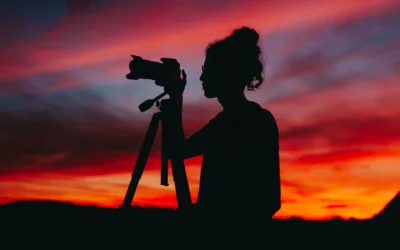Responsible travel photography is about more than just taking pictures. It’s about understanding the culture and respecting the people you’re photographing. With a little preparation and respect, you can ensure that your pictures are both responsible and rewarding.
An Expert’s Guide To Responsible Travel Photography
As a responsible travel photographer, you have a duty to capture the world around you in a respectful way. This begs the question, “What is ethical photography?”
Ethical photography is defined as taking photographs that are in keeping with the principles of responsible tourism. So, ensure your photography does not negatively impact the people or places you photograph and instead works to benefit them. There are a couple of tips to keep in mind for taking ethical and respectful travel photography on your next trip.
Get Permission Before Taking Photos Of People
One of the most important elements of ethical photography is getting permission before taking photos of people. If you don’t have permission to take someone’s photo, don’t do it. It’s as simple as that.
There are a few exceptions to this rule. For example, if you photograph someone in a public place like a park or street, you generally don’t need to get their permission. However, if you’re taking a photo of someone in a more private setting, like their home or place of work, it’s always best to ask first.
Even if you think you have permission to take someone’s photo, it’s always courteous to check with them before doing so. This goes double if you plan on sharing the photo online or in any other public way. Remember, once a photo is out there, it’s very hard to control who sees it and how it’s used.
Be Sensitive To The Local Culture And Customs
When traveling to a new place, respect the local culture and customs. Be aware of things like religious beliefs and dress codes.
For example, in some cultures, taking photos of people without their permission may be considered disrespectful. Women may be expected to cover their heads or faces in public as per cultural norms.
You need to be aware of cultural norms around photography. In some places, photographing certain landmarks or buildings may be prohibited. In some cases, photographing people without their permission may be considered rude.
The best way to avoid offending someone is to ask before taking their photo. This shows that you respect their culture and are considerate of their feelings.
Avoid Staged Or Posed Photos
Staged or posed photos are those in which the subjects are either aware of the camera or have been directed to pose in a certain way. These photos can often be found in touristy areas, where people are trying to make a quick buck by selling souvenirs or posing for photos with visitors.
While there’s nothing necessarily wrong with taking these types of photos, they often lack the authenticity and natural feeling that ethical photography strives for. If you can, try to avoid these photos and instead focus on candid shots that capture people in their natural environment.
Be Aware Of Your Impact
As a travel photographer, you have the unique opportunity to use your images to promote responsible tourism. Be aware of your photography’s impact on the places and people you photograph.
For example, if you’re photographing a community struggling with poverty or other issues, avoid stereotype-reinforcing images that could further marginalize them. Instead, try to focus on more positive aspects of their culture and daily life.
In addition, be mindful of the way you share your photos online. You could be contributing to a harmful stereotype if you post images that show people in a negative light or make them look like objects or animals. So, be sure to only share photos you feel comfortable with and know won’t hurt or offend anyone.
Ethical travel photography is about more than just taking good photos. It’s about being a responsible and respectful photographer aware of their images’ impact on the world. By following the tips above, you can help ensure that your photography contributes to a more positive worldview.



